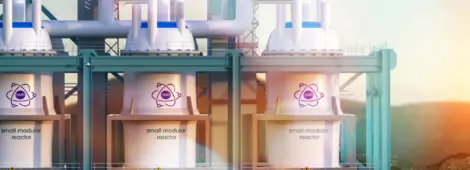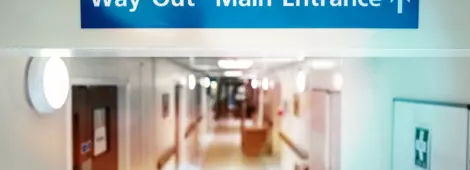
CE Marking vs. UL 9540: Understanding Global Safety and Compliance for BESS
by Jihan El Ouaragli and Jens Conzen
As Battery Energy Storage Systems (BESS) enter global markets, the question often comes up: Is a CE (Conformité Européenne) Mark enough to prove safety? The short answer: No, not in North America.
In Europe, you’ll need to affix a CE Mark to meet the new European Union (EU) Battery Regulation. In North America, authorities will ask for a UL 9540 certification on your system. It’s easy to assume these marks are interchangeable indicators of safety and quality, but in reality, they serve very different purposes and are required by different stakeholders.
This post explains what CE marking entails under the updated EU Battery Regulation, how it differs from a UL 9540 certification for BESS and why CE marking alone is not enough for safety compliance in North America.
CE Marking: Market Access Requirement for the EU
A CE Mark is the EU’s mandatory conformity mark for many product categories, including batteries and energy storage systems. Under the EU Battery Regulation (Regulation (EU) 2023/1542), all types of batteries – from portable cells to large-scale stationary BESS – must carry the CE Mark starting in August 2024 to be placed on the EU market legally.
The CE Mark indicates that the product complies with all applicable EU safety, environmental and health regulations, including requirements related to:
- Basic electrical and battery safety
- Performance and durability (e.g., cycle life and reliability)
- Sustainability such as carbon footprint, recoverable materials and proper labeling (e.g., Battery Passport)
This process includes a conformity assessment, which can involve in-house testing or external testing to harmonized standards like European Norm (EN) or International Electrotechnical Commission (IEC), but in most cases it is a self-declaration by the manufacturer.
CE marking is not a safety certification issued by a third-party testing lab. It is a declaration that the manufacturer takes full responsibility for compliance with EU legislation. That means CE does not automatically guarantee that a BESS has been independently tested, verified or inspected, a key distinction when compared to safety listings like UL 9540.
Think of CE as a passport that allows you to legally sell and move your product within the EU, but not as a stamp of rigorous safety testing.
UL 9540: System-Level Safety Certification for BESS
By contrast, UL 9540 is a North American safety certification specifically for energy storage systems and equipment. It is referenced by building and fire codes such as NFPA 855 and the International Fire Code (IFC) and is a prerequisite for AHJ (Authority Having Jurisdiction) approval across North America.
Unlike CE, which is often self-declared to sell the BESS, UL 9540 certification is required not to sell a BESS, but to install and operate it legally.
Here’s what UL 9540 includes:
- Third-party testing and evaluation by a nationally recognized testing lab (NRTL)
- Evaluation of the entire BESS including batteries, inverters, controls, enclosures, ventilation, wiring and interconnections
- Verification that the BESS components are certified to their applicable standards (e.g., UL 1973 for batteries, UL 1741 for inverters)
- Fire and thermal runaway safety testing (UL 9540A sequence testing)
- Ongoing compliance through factory audits
A BESS that achieves UL 9540 certification will typically bear a UL Listing Mark and come with a Certificate of Compliance, which AHJs look for during design review and final inspection. Without it, installations often won’t be approved.
In some cases, field evaluations may be conducted on-site by a NRTL to assess safety. These are typically project-specific and may help gain AHJ acceptance when full certification is not yet available. However, field evaluations are not a substitute for UL 9540 certification through lab testing and are generally not suitable for large-scale or commercial deployments.
Why CE and UL are not interchangeable?
It’s a common misconception that a CE-marked product is automatically “certified.” While CE marking is required for market access in Europe, it does not meet the safety certification requirements in North America. In North America, a CE-marked BESS will not satisfy building or fire code requirements, nor the expectations of AHJs. UL 9540 is the recognized system-level certification standard for BESS in North America, and it cannot be replaced by a CE marking.
If you're designing or sourcing a BESS for global deployment, you'll likely need to plan for both CE and UL 9540 certifications from the outset. Here are a few key considerations to keep in mind:
- Select BESS components that are certified to relevant safety standards
- Design with fire safety and hazard mitigation in mind to streamline the testing and certification process
- Engage early with testing labs and fire consultants who understand the regulatory and certification landscape in both the EU and North America.
Have questions about BESS certification and testing? Reach out today to discuss your compliance roadmap. We’re here to help you build safer systems, everywhere.

Subscribe to Our Lithium-Ion Insights Series

Dr. Jihan El Ouaragli is a staff engineer at Jensen Hughes, specializing in battery fire protection, including battery energy storage systems (BESS), battery storage and testing, micromobility, and electric vehicles (EVs). With a Ph.D. in…

Jens is a Vice President of business development in the Midwest, and a Subject Matter Expert in Industrial and Process Safety. He has hands-on experience in various disciplines, such as engineering design, international and national…












